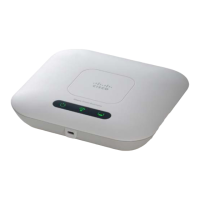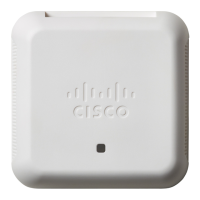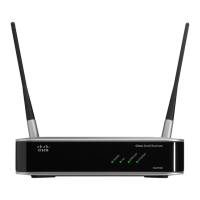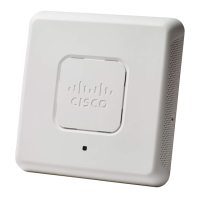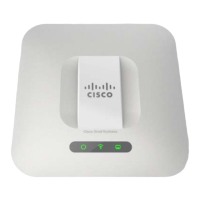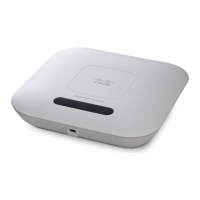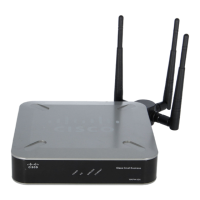Wireless
Networks
Cisco WAP131 and WAP351 Administration Guide 92
5
You can use any of a variety of authentication methods that the IEEE 802.1X mode
supports, including certificates, Kerberos, and public key authentication. You must
configure the client stations to use the same authentication method the WAP
device uses.
These parameters configure Dynamic WEP:
• Use Global RADIUS Server Settings—By default, each VAP uses the
global RADIUS settings that you define for the WAP device (see RADIUS
Server). However, you can configure each VAP to use a different set of
RADIUS servers.
To use the global RADIUS server settings, ensure that the check box is
selected.
To use a separate RADIUS server for the VAP, uncheck the box and enter the
RADIUS server IP address and key in these fields:
• Server IP Address Type—The IP version that the RADIUS server uses. You
can toggle between the address types to configure IPv4 and IPv6 global
RADIUS address settings, but the WAP device contacts only the RADIUS
server or servers for the address type that you select in this field.
• Server IP Address 1 or Server IPv6 Address 1—The address for the
primary RADIUS server for this VAP. If IPv4 is selected as the Server IP
Address Type, enter the IP address of the RADIUS server that all VAPs use
by default, for example, 192.168.10.23. If IPv6 is selected, enter the IPv6
address of the primary global RADIUS server, for example,
2001:DB8:1234::abcd.
• Server IP Address 2 to 4 or Server IPv6 Address 2 to 4—Up to three IPv4
or IPv6 backup RADIUS server addresses. If authentication fails with the
primary server, each configured backup server is tried in sequence.
• Key 1—The shared secret key that the WAP device uses to authenticate to
the primary RADIUS server.
• Key 2 to Key 4—The RADIUS key associated with the configured backup
RADIUS servers. The server at Server IP (IPv6) Address 2 uses Key 2, the
server at Server IP (IPv6) Address 3 uses Key 3, and so on.
• Enable RADIUS Accounting—Enables tracking and measuring of the
resources a particular user has consumed, such as system time, amount of
data transmitted and received, and so on. If you enable RADIUS accounting,
it is enabled for the primary RADIUS server and all backup servers.
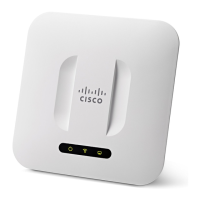
